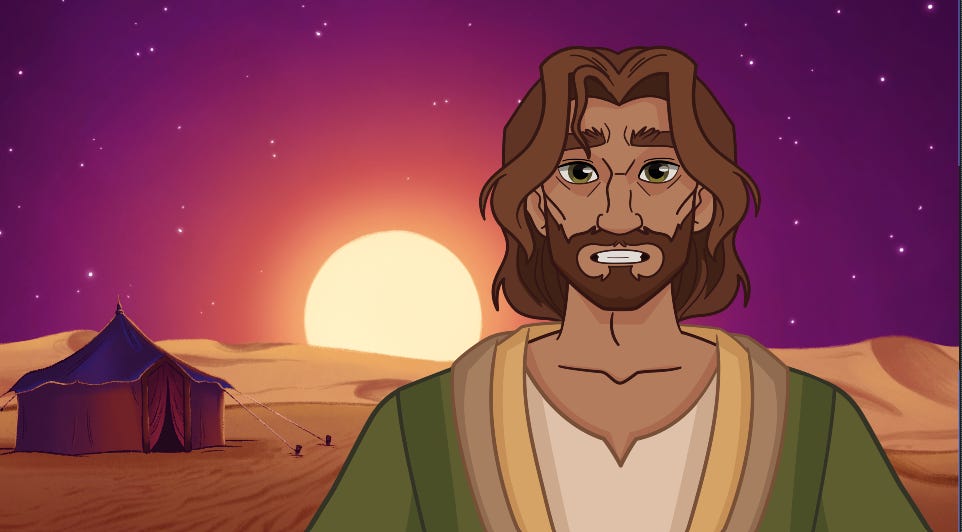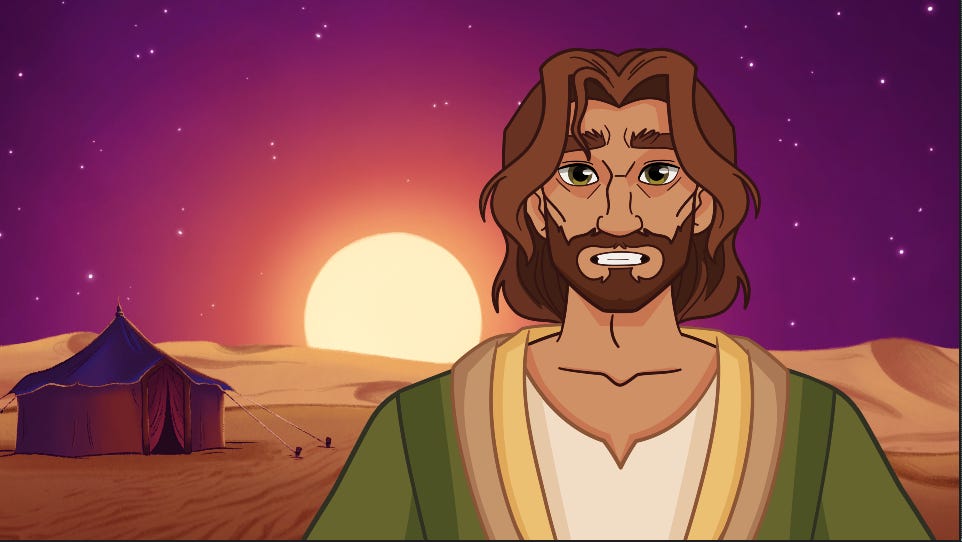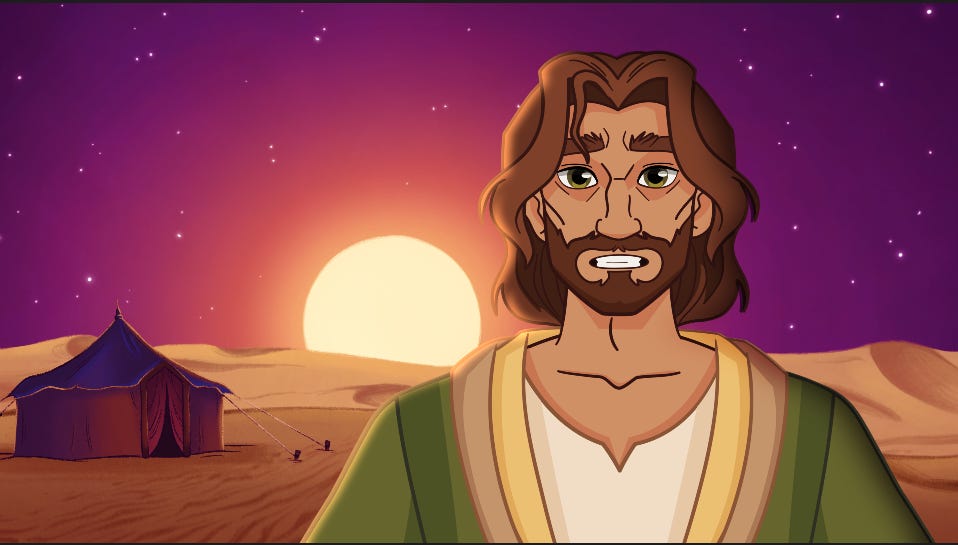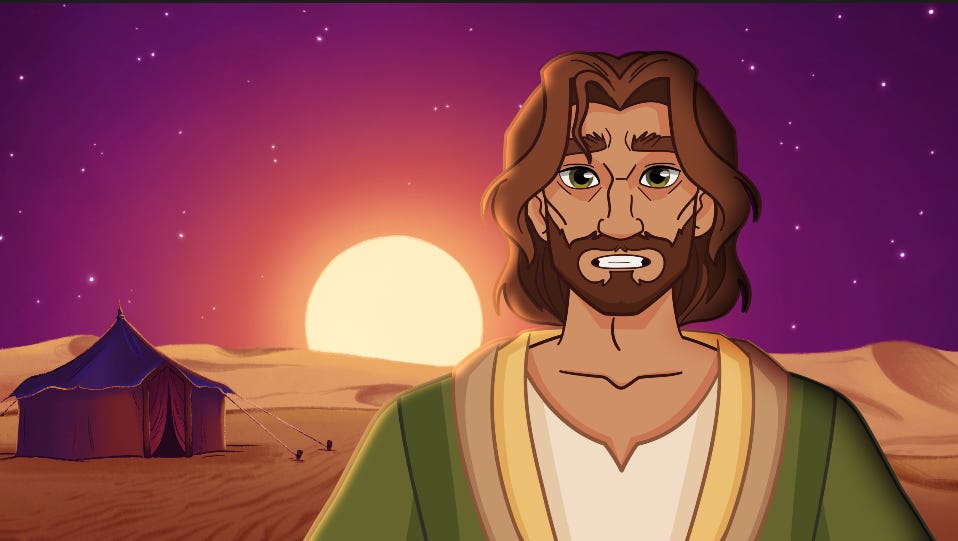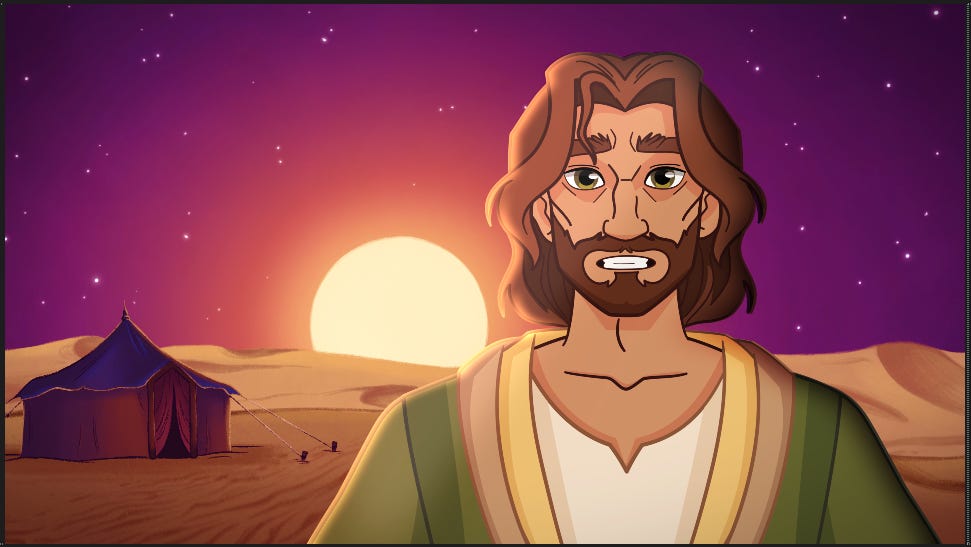Guest Post! Compositing with Bridget
Lighting Light of the Patriarchs: A Compositors Perspective
Lighting Light of the Patriarchs: A Compositors Perspective
Next to my night stand I have a sleeping St. Joseph statue that I bought from Assisi. Alongside many Catholics, I follow the tradition of writing prayer intentions to St. Joseph and placing them under the statue so he can “sleep on it.” After praying for months about various personal, and professional, intentions, St. Joseph started answering. My priest used to say God may be slow, but he’s never late. I guess the same goes for St. Joseph. Around the same time that St. Joseph was answering my prayers, the team at Claritas Studios tasked me to work on lighting Light of the Patriarchs and I really felt his presence.
God’s perfect timing and St. Joseph’s quiet presence
For the past few months, St. Joseph has been guiding me through this film as well as through all the crosses I carry daily and I am excited to share the film with the world.
As an avid Mandalorian and St. Joseph fan, being asked to light Claritas Studios’ St. Joseph Light of the Patriarch’s short film, was a dream come true.
The Art and Science of Lighting Animation
How lighting principles shape animated storytelling
Here is some insight to how I approached this project and the lessons I learned along the way:
The Process
Whether it’s film or traditional art mediums, artistic lighting concepts are all the same. As a digital lighting and compositing artist, it’s my job to become a part of the cinematography team. I need to understand light and form and how to translate that to a 2D animated image. All the principles that lighting artists use on practical sets apply to animation as well. Understanding key light, rim lights, and how light not only renders a character, but supports the story is all part of the lighting artist’s task.
Breaking Down the Lighting Passes
From original plate to final cinematic glow
The original plate - Here is what the image looks like straight out from the animation team. It’s their job to focus on motion, and my job to focus on light.
Integration Pass - Here, I added a color correction to the whole character to make them blend into the scene and seem as if the light was affecting the whole character
Environment Pass - I liked to add in general dark and light gradients on the character to make it seem like they are sitting in the environment.
Shadow Pass - It’s as easy as it sounds. I locate the light source and add in rim shadows to give the character more dimensionality.
Highlight Pass - I end with the highlight pass because it’s usually the part that sticks out to audiences the most. Sometimes I added multiple layers to further help blend the light.
Background Pass - some of the scenes required background elements to be added (stars) or to be color corrected to better match the mood of the scene. During this stage, I also add in vignettes and film grain to give it that extra cinematic look.
When it comes to lighting, 90% of the work is done upfront. Getting each pass in doesn’t take too much time or effort. It’s the last 10% where we are honing in the details, working on feedback, and blending the final image where the hard work kicks in.
Inspirations Behind the Light
Film references and real-world visuals that guided me
Much of my lighting inspiration comes from films I grew up watching, such as Ratatouille or Spiderman Across the Spider-Verse. Films like these set a great example of how to interpret real life light and translate it into their animation mediums while continuing to support the story. For St. Joseph, we looked at scenes from Star Wars and The Prince of Egypt as reference. As a digital artist, it’s also always important to pull up real life references. I was looking at images of night skies, nebulas, sunsets, and faces lit in half shadow.
Lessons Learned on This Journey
Tips and tricks every digital lighting artist should know
Explore blending modes - Blending modes are so powerful and some blending modes worked better for other shots. It’s important to iterate and experiment to because you never know what will work and what won’t
Camera tracking, and motion tracking are your best friend - I often found myself tracking more elements to the background or the character than I anticipated. When a character moves, so does the light so it is important to animate lights to keep the scene consistent.
Go with your gut - I feel that there is a film trend leaning towards darker, less saturated colors. For St. Joseph, even though he is dealing with dark themes, I wanted to lean into the tasteful higher contrast and bright colors. I felt this helped cater our audience without distracting from the heavy topics Joseph grapples with.
Working on St. Joseph: Light of the Patriarchs was such a pleasure and I’m happy to be a part of this wonderful team. Keep your eye out for St. Joseph: Light of the Patriarchs on YouTube and on the Claritas Studios website!
St. Joseph,
Pray for us!
How to Give
ㅤ
If you feel called to give and support the making of Joseph: Light of Patriarchs, you can do so through our general fundraising link. This is the simplest and easiest way to support us. God bless you and thank you for walking this journey with us! 💜


